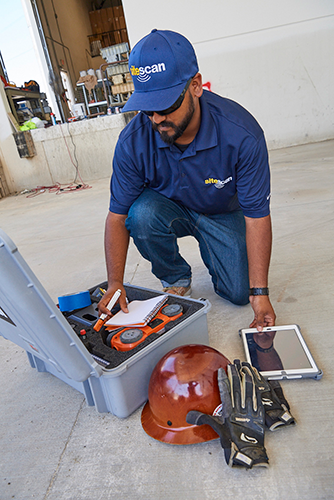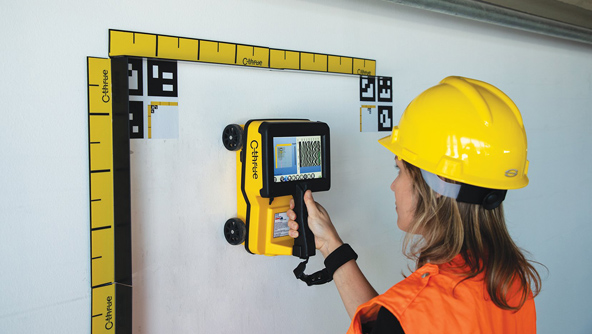RainierGPR Service Areas: Professional Concrete Scanning in Your Area
Wiki Article
Concrete Scanning: An Important Action Towards Ensuring Architectural Stability and Security
In the realm of construction and framework upkeep, the value of concrete scanning can not be overemphasized. This thorough process holds the essential to unveiling potential hazards concealed underneath the surface area of relatively strong frameworks. By employing innovative modern technology and techniques, concrete scanning works as a critical device in making certain that the honesty and security of buildings and bridges are upheld to the highest criteria. However, past its surface-level implications, the function of concrete scanning prolongs much deeper than satisfies the eye.Relevance of Concrete Scanning
Concrete scanning plays a vital function in ensuring the structural stability and safety and security of structures and facilities tasks. By utilizing sophisticated innovations such as ground-penetrating radar (GPR) and electromagnetic induction, experts can non-destructively evaluate concrete frameworks to spot prospective issues, voids, embedded things, and support format. This process enables early detection of anomalies that can compromise the stability of a structure, preventing expensive problems and making certain the safety of occupants.Concrete scanning is especially essential during the planning and construction phases of a task. Prior to exploration, reducing, or coring right into concrete, scanning helps identify the precise locations of rebar, post-tension cords, and various other embedded elements, reducing the risk of accidental hits that could result in structural weaknesses. In addition, concrete scanning help in quality assurance by validating the density of concrete covers and spotting any disparities that may influence the total longevity of the framework. Ultimately, purchasing concrete scanning solutions is not just a positive measure to alleviate threats however also a basic step towards keeping the long-lasting safety and security of structures and framework.
Modern Technology for Concrete Assessment

Benefits of Early Detection
Timely detection of structural problems can substantially alleviate threats and ensure the longevity of construction tasks. By identifying possible troubles early on in the construction process, stakeholders can take positive steps to deal with issues prior to they rise right into bigger and a lot more expensive issues. One of the crucial benefits of early discovery is the prevention of architectural failings, which can posture severe safety risks and lead to task hold-ups and economic losses.Furthermore, very early discovery permits my website for timely repair work and maintenance, which can aid prolong the life expectancy of the structure. By addressing concerns immediately, building teams can stay clear of expensive repairs and even the need for premature substitute of structural parts. This positive technique not only saves money and time but additionally improves the general safety and toughness of the building project.
Furthermore, very early detection can boost job preparation and decision-making by supplying stakeholders with valuable understandings into the problem of the structure. Armed with this info, job supervisors can make informed options regarding building timelines, products, and approaches, leading to extra efficient and successful project results.
Ensuring Structural Stability
Making sure the structural stability of a construction task is critical to its safety and longevity. Concrete scanning plays an important role in guaranteeing structural stability by spotting potential concerns such as gaps, delamination, or support deterioration that might jeopardize the integrity of the framework over time.By making use of innovative scanning modern technologies like ground-penetrating radar (GPR) and electro-magnetic induction, building professionals can non-invasively check concrete frameworks to determine areas of problem underneath the surface. This proactive approach permits the very early detection of issues or weaknesses, allowing prompt fixings or reinforcement to avoid structural failings.
Regular concrete scanning throughout different building phases and throughout the life process of a structure can aid preserve its stability, mitigate risks, and make sure the security of owners. By focusing on architectural stability through concrete scanning, construction jobs can boost their durability and sturdiness, ultimately contributing to higher safety and durability.
Preventing Important Failings
Applying regular evaluations, such as concrete scanning, can disclose surprise issues like gaps, splits, or deterioration that could jeopardize the stability of a structure. By utilizing advanced scanning technologies like Ground Passing through Radar (GPR) or Concrete X-ray, engineers can non-destructively examine the problem of concrete and determine weak points that need reinforcement or repair.
Conclusion
To conclude, concrete scanning plays an important function in making sure architectural honesty and security by using advanced technology for very early discovery of possible problems. This positive method helps protect against crucial failures and guarantees the security of structures. It is necessary to prioritize concrete why not try here evaluation as a conventional practice to shield the durability and security of buildings and framework.Concrete scanning plays a vital function in ensuring the architectural honesty and safety and security of buildings and framework jobs. Additionally, concrete scanning help in high quality control by confirming the thickness of concrete covers and detecting any type of discrepancies that might impact the general resilience of the framework. Concrete scanning plays an important duty in making sure structural security by discovering possible problems such as gaps, delamination, or reinforcement deterioration that might jeopardize the integrity of the framework over time.

In conclusion, concrete scanning plays an essential function in making sure structural integrity and safety and security by making use of sophisticated innovation for early detection of potential concerns.
Report this wiki page